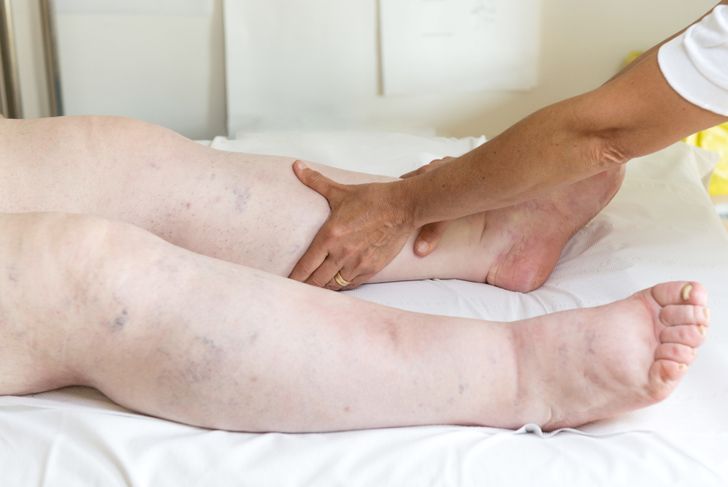Endocarditis is an infection of the endocardium. This is the inner lining of the heart chambers and valves. It is a rare condition and usually does not affect people with healthy hearts. Treatment of the disease depends upon the kind of endocarditis. We shall be dealing in this discussion with infective or bacterial endocarditis. Infectious agents or pathogens mainly cause bacterial endocarditis. These are largely bacterial, but a few other organisms can also be responsible. How fast the disease can progress will depend upon what kind of germs are causing the infection. It will also depend on whether a patient has an underlying heart problem.
Flu-like symptoms
Fevers and chills are symptoms you might experience when affected by bacterial endocarditis. Many of us are not aware that an elevated body temperature is an indication. It shows that the body’s immune system is combating an infection. If the body is strong enough, the body could succeed in resolving the infection. In instances when the temperature rises too high, the body cannot cope with the infection. This is a sign that the fever is serious and without treatment, may lead to complications. Chills are feelings of coldness and usually come with shivering. You can experience this even without a fever. This typical condition occurs when the body gets exposed to a cold environment. Any condition that can cause fever can also cause chills.
Weakness and fatigue
All of us have experienced fatigue at one time in our lives. It is a feeling of being very tired, weak, and spent. It not only affects the physical but the mental as well. When the body works overtime to ward off infection, you will definitely feel fatigued. Along with this, you may also experience shortness of breath. You may also feel chest pains when you breathe and aching in your joints and muscles. You will feel fatigued even without any physical exertions. When these symptoms become more intense, it is a sign of a serious health issue. A condition like bacterial endocarditis needs immediate attention.
Heart murmur
One way for the doctor to determine the health of your heart is by listening to your heartbeat. He would do this using his stethoscope. If it beats on a normal rhythm, then you should be alright. In some instances, an irregular beat or some murmurs is coming from your heart. This could be an early indication of bacterial endocarditis. Always be sure that your heart beats in rhythm. All abnormalities cannot be precisely detected without a thorough check-up with your doctor.
Edema
This condition is common, especially among older people. You would experience swelling of the extremities. And you’d usually feel this after prolonged sitting down sessions. Edema is the swelling of the legs, feet, or hands. It’s caused by the accumulation of excessive fluids in the tissues. This disease is common in people who have heart, liver, and kidney problems. It’s another symptom of bacterial endocarditis and is mainly due to salt retention. The more salt in the body, the more water gets retained. Persons afflicted with the disease are emendations. Bacterial endocarditis will and can cause swelling in your feet, legs, and abdomen.
A cough
Coughing is another symptom of bacterial endocarditis. This is a common reflex action that clears the throat of mucus and foreign irritants. Although usually, it’s thought of as a disease in itself. But a cough actually helps the body in expelling unwanted irritants. Incidents can happen infrequently or consecutively. Normally, coughs should clear up or significantly improve in about two weeks. Consult with your doctor if a cough persists for weeks as it may be more serious. It may be another sign of bacterial endocarditis.
Sweating and headaches
Constant sweating, especially at night could be an indication of some medical problems. This could include bacterial endocarditis. Finding the cause of such sweating could offer the right solution. Chronic headaches may also need some medical attention. They can lead to further complications. This is also a symptom of bacterial endocarditis. These chronic migraines can interfere with one’s daily routines. The pain can occur on any part of the head, on both sides, or in always the same location.
Unexplained weight loss
There are many symptoms brought about by bacterial endocarditis. They will certainly interfere with a person’s normal daily routines. A weakening of the body will affect the body’s physiology. Normal body functions will be off-tangent. Because of this, the individual may fall into anxiety, depression, and restlessness. The constant pain, abnormalities, fatigue, and more will further make things worse. The loss of appetite will be a consequence of these conditions. Ultimately, it will lead to a loss of weight.
Spleen abnormality
Unknown to almost all, the spleen is an infection-fighting abdominal organ. Feel it on the left side of your body, just below the rib cage. The spleen helps in the production and removal of blood cells and forms part of the immune system. Bacterial endocarditis can cause the spleen to enlarge. This could give you a feeling of pain or discomfort. Eating just a minimum amount of food will give you a feeling of fullness. This is because the stomach will press against your enlarged spleen.
Blood in the urine
The presence of blood in urine is an indication of a serious medical condition. The blood may be visible in small quantities and often invisible to the naked eye. Laboratory tests will confirm this. The condition in medical lingo is hematuria. This could be a sign of infections such as bacterial endocarditis. Make an appointment with your doctor as soon as possible when you have blood in your urine. Ignoring this could lead to more serious conditions. A clinical analysis and order imaging can determine the cause of your hematuria. Then the doctor can administer the necessary treatment.
Skin symptoms
Take note of several skin symptoms that may occur because of bacterial endocarditis. First, there are Janeway lesions. These are non-tender, small erythematous or hemorrhagic macular or nodular lesions. They can appear on the palms or soles and are indicative of bacterial endocarditis. You might also notice Osler’s Nodes. These are painful, red, raised lesions found on the hands and feet. They are symptoms of a number of conditions, including infective endocarditis. Finally, there’s Petechiae. These are tiny, purple, or red spots. They occur because of bleeding into the skin, the inside of your mouth, or the white of your eyes. These are actually broken blood vessels that appear as red spots. They can also occur because of bacterial endocarditis.

 Home
Home Health
Health Diet & Nutrition
Diet & Nutrition Living Well
Living Well More
More




















